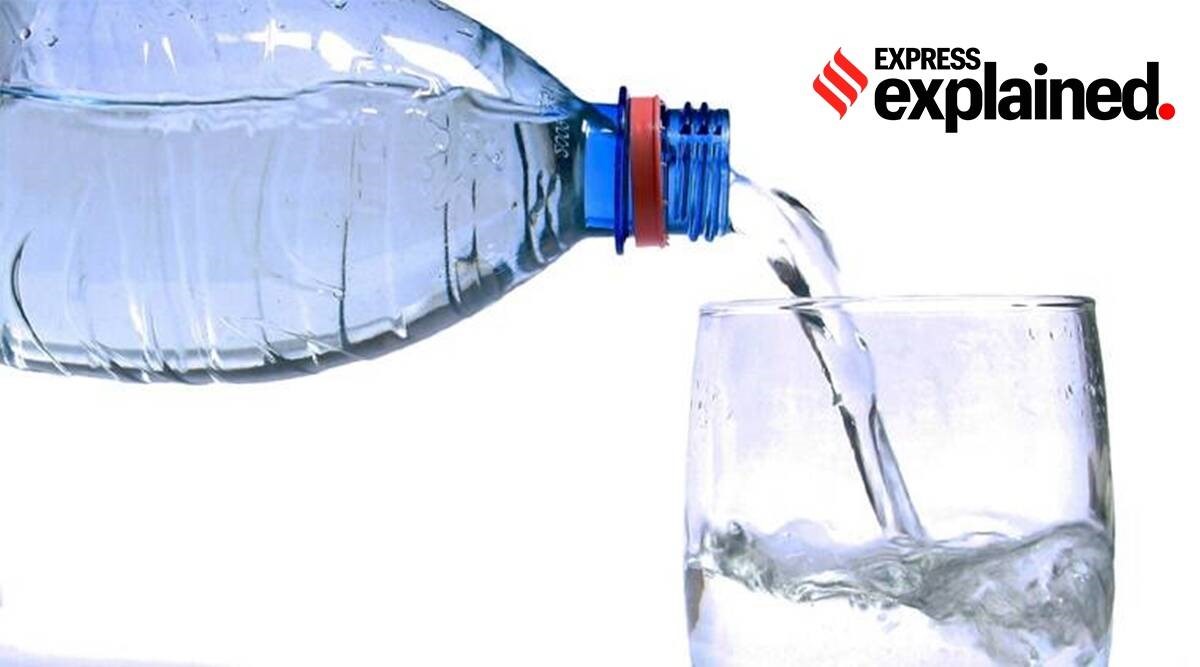Description

Copyright infringement not intended
Context: Scientists from South Korea have developed a new water purification system that can quickly and efficiently filter out microplastics. Crucially, the polymer used is relatively inexpensive with excellent adsorption performance and good photothermal properties.
Details:
- In an experiment, over 99.9 per cent of contaminants were taken out of the water in just 10 seconds.
- Microplastics have inundated the world, finding their way into the human food chain . While some traditional carbon-based filters can filter out microplastics, they have limitations — the adsorption rate is slow and they are not energy-efficient.
- The Korean team’s breakthrough system requires lower levels of energy, making it ideal for solar-based use. This is particularly useful for developing countries where power supply is inconsistent.
What are microplastics?
- Microplastics are plastic debris smaller than 5mm in length, or about the size of a sesame seed.
- They come from a variety of sources, one of them is when larger pieces of plastic degrade into smaller pieces, which are difficult to detect.
.jpeg)
Why is microplastic pollution especially harmful?
- The durability of plastic, which implies that plastic can take hundreds to thousands of years to decompose depending on the type of plastic and where it has been dumped.
- In the oceans, plastic pollution impacts marine life, ocean health, coastal tourism and even human health.
- Over the past few years, various news reports have shown that marine animals such as whales, seabirds and turtles unknowingly ingest plastic and often suffocate.
- For humans, too, marine plastic pollution is harmful if it reaches the food chain. For instance, microplastics have been found in tap water, beer and even salt.
- One of the first studies to estimate plastic pollution in human ingestion that was published in June 2019 said that an average person eats at least 50,000 particles of microplastic each year. Consumption of plastic by humans is harmful since several chemicals that are used to produce plastics can be
Measures taken by government:
- India has pledged to ban all single-use plastics by 2022.
- All offices of central and state governments and major PSUs have been told to prohibit single-use plastic products.
- India has banned imports of solid plastic waste.
- India has passed the Plastic Waste Management Rules, 2016 and introduced the Extended Producer Responsibility.
Plastic Waste Management Rules, 2016
- It aims to increase minimum thickness of plastic carry bags from 40 to 50 microns.
- Expand the jurisdiction of applicability from the municipal area to rural areas, because plastic has reached rural areas also.
- Extended Producer Responsibility: To bring in the responsibilities of producers and generators, both in plastic waste management system and to introduce collect back system of plastic waste by the producers/brand owners, as per extended producers responsibility
- Introduced collection of plastic waste management fee through pre-registration of the producers, importers of plastic carry bags/multilayered packaging and vendors selling the same for establishing the waste management system
- Promote use of plastic waste for road construction as per Indian Road Congress guidelines or energy recovery, or waste to oil etc. for gainful utilization of waste and also address the waste disposal issue.
Way Forward:
The 3R’s +E Strategy:
- Reduce: To efficiently reduce plastic pollution, there is an evident need of reducing our usage of plastic.
- Reuse: Many plastic items can be reused or used for different purposes. Before throwing plastic items, it is important to consider how they can be reused.
- Recycle: Plastic recycling consists of collecting plastic waste and reprocessing it into new products, to reduce the amount of plastic in the waste stream.
- Educate: Another crucial solution is education in order to increase awareness and behavioral change.
Legal wayout:
- Law can be framed and used to tackle plastic pollution and support a circular plastics economy.
- Policy shifts can reduce plastic pollution by incentivizing changes in both business and consumer behavior, as well as in plastic design, alternatives and recycling.
- Governments can also impose taxes to deter the production or use of single-use plastics, or offer tax breaks, subsidies and other fiscal incentives to encourage alternatives to single-use plastic products.
- Product standards, certifications and labeling requirements can be designed to educate the public on the environmental impacts of plastic, and on the health and safety hazards involved in their production and use.
- Extended Producer Responsibility (EPR) programs can ensure that manufacturers maintain responsibility for single-use plastic products throughout the whole life cycles of those products.
Conclusion:
- There is no silver bullet to solving the world's plastic problem. It will require governments at both the national and sub-national levels to tackle the regulation of single-use plastic products, determining what policy approaches they want to use and what type of legislation will support their objectives.
https://indianexpress.com/article/explained/new-tech-can-filter-microplastics-with-minimal-energy-says-study-8357460/












